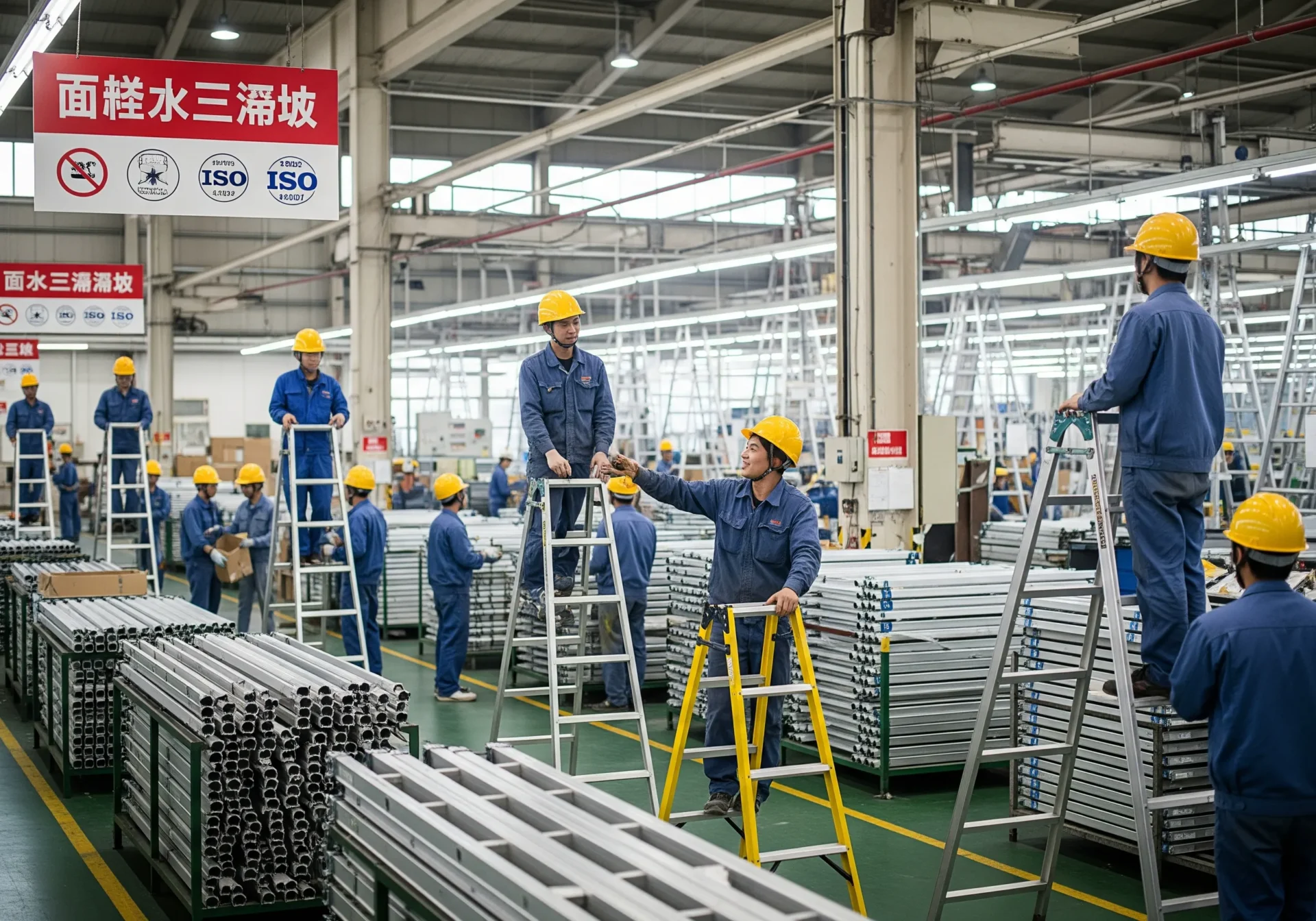Introduction
In Vietnam, the demand for ladders and stepladders is increasing year by year due to rapid urbanization and the expansion of the manufacturing, construction, and logistics industries. However, the challenge faced by procurement managers is not simple price competition, but the difficult task of optimizing the three elements of safety, durability, and cost. While imported products are attractive for their high quality that complies with international standards, they often come with the burden of high transportation costs and tariffs, as well as long delivery times. On the other hand, locally produced goods have the advantage of short delivery times and low costs, but there can be inconsistencies in standards compliance and service life. This article will provide a detailed explanation of procurement strategies that balance worksite safety and operational efficiency, using statistical data, standards comparisons, and real-world examples.
Vietnam Market Trends and Background
Market Data and Import/Export Trends
According to 2024 statistics, Vietnam’s export value of ladders and stepladders increased by 12% compared to the previous year, with Japan and the United States being the main export destinations. Domestically, the construction of high-rise buildings, infrastructure development, and the establishment of new logistics hubs are progressing, expanding the demand for products for factory maintenance and warehouse work. Furthermore, products for export must meet the standards of the destination country in addition to local safety standards, requiring a high level of manufacturing management.
Safety Standards and Regulations
Under Vietnam’s Law on Occupational Safety and Health (amended in 2015), the use of a safety harness is mandatory for work at heights of 2 meters or more. The safety standard for ladders is TCVN 7659-1:2007, which is based on EN131. However, when compared to JIS or ISO, there are differences in the details of weather resistance tests and load-bearing capacity tests. Products used in multiple countries must comply with multiple standards.
Evaluation Criteria for Cost and Quality in Procurement
Cost Factors
Material selection directly impacts the balance between price and performance. Aluminum is lightweight, has excellent rust resistance, and is relatively inexpensive. FRP (Fiber Reinforced Plastic) has high insulation and corrosion resistance, making it highly valued in chemical plants and electrical equipment sites, but its price is higher than aluminum. Local production offers a price advantage through zero tariffs and reduced transportation costs, but imports have a structure that is susceptible to currency fluctuations and logistics costs.
Quality Factors
A load capacity of 150 kg or more, a durability of 10 years or more, and the presence of a weather resistance label are crucial for worksite safety. Under its ISO9001 certification, Hasegawa ensures all its products meet JIS and EN standards, and has a design and quality assurance system that withstands long-term use.
Hasegawa Vietnam’s Products and Strengths
Main Product Lineup
In addition to aluminum stepladders, platforms, workbenches, and scaffolding boards, the company manufactures FRP ladders for electrical work and chemical plants. All products comply with international standards and can meet a wide range of worksite needs.
Production System and Future Plans
The current annual production capacity is in the tens of thousands of units, with plans to triple this within five years. The company has a flexible production line that can handle custom orders and sudden increases in demand. In one case, the delivery time for custom-made stepladders for a logistics company was shortened from the conventional two months to three weeks.
Case Study: Cost Reduction and Safety Improvement through Local Procurement
Before: High costs and an average delivery time of two months due to reliance on imports from Japan. Delays in replacement cycles were frequent at the worksite.
Action: Switched to Hasegawa Vietnam, enabling short-notice production of custom specifications locally. Shortened transport distances also led to inventory compression.
After: Achieved a 15% reduction in total costs, a 3-week delivery time, and full compliance with safety standards. Worksite operational efficiency improved by 20%, and the accident rate also decreased.
Checkpoints for Successful Procurement
- Always keep track of the lead time from order to delivery to prepare for demand fluctuations.
- Confirm the existence of certificates of conformity to standards such as TCVN, JIS, and EN, and evaluate whether the product can be used for export and multi-location deployment.
- Calculate the long-term total cost, including not only the purchase price but also maintenance and replacement cycles.
Conclusion
In procuring ladders and stepladders in Vietnam, the key to success is to balance the cost benefits of local production with the quality assurance provided by compliance with international standards. With its high production capacity and strict quality control, Hasegawa Vietnam can be a partner that simultaneously solves the “cost, quality, and delivery time” challenges faced by procurement managers. This enables the realization of safe and efficient worksite operations and long-term cost optimization.

